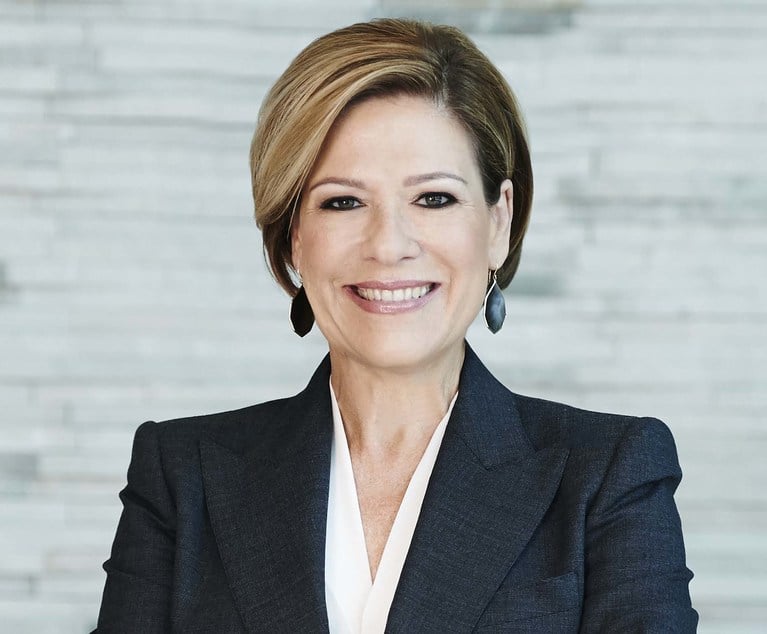SAN DIEGO—“On February 2, the yield on the 10-year treasury note hit a 21-month low of 1.67%. Of course, everybody and his brother believes the Fed will move this year to boost rates but what if meaningfully higher rates are still six to 12 months—or more—away?” That question is posed by Mitch Siegler, senior managing director and co-founder of Pathfinder Partners LLC. Siegler, who writes the below commentary on the subject for GlobeSt.com and says that the party for borrowers—and the wake for savers—may go on for a while. “Macro (global) economic forces swamp micro (U.S. economic growth) considerations. Japan's continuing deflation, China's economic slowdown, the stagnant European economy and collapsing oil prices contribute further to deflationary pressures everywhere,” he says. “These global trends far outweigh U.S. job creation and wage inflation (whenever that may come).”
In the commentary below, Siegler groups all of these forces together under the 3-D umbrella—debt, deflation and demographics. Please note that the views expressed in this column are the author's own.
Debt
As more central banks around the world continue quantitative easing (QE or easy money) policies, demand for fixed income instruments, bonds, will increase. That's because a government can't simply proclaim that its currency will be lower—the central bank has to print more of it and that money has to be invested somewhere, usually in bonds – and much of it in U.S. Treasuries. That's why our interest rates will likely remain low and perhaps continue to trend even lower in 2015.
We are in the later innings of a debt super-cycle—during the past quarter century, debt has grown to unsustainable levels around the world. Nations today are at risk of being unable to service their sovereign debt, not to mention their social insurance programs, like pensions and social security. There are limits and we believe we're now at a tipping point as even profligate governments are thinking twice (and maybe they ought to think three times) about continuing to borrow for infrastructure investments like new highways, ports, high-speed trains and the like. When you have to service high levels of debt, it crimps funds available for savings or investment (not to mention debt repayment). At the end of a debt super-cycle, interest rates hover at low levels and monetary policy is increasingly ineffective – as we've been experiencing.
In January, the Swiss central bank shocked currency traders when it removed its 1.2 peg on the Swiss Franc versus the Euro. In a nanosecond, the Franc went to parity (1.0) to the Euro. Overnight, prices on Swiss chocolates and watches shot up nearly 20% and Swiss travelers this summer will save a bundle. Analysts think the Swiss bankers anticipated additional stimulus from the European Central Bank, which would create further downward pressure on the Euro (which has already fallen 15% during the past year, from $1.37 to $1.16). But, the bigger news is that the yield on the Swiss 10-year bond is now in negative territory—which only adds further downward pressure on interest rates around the world.
Deflation
Another thing we've been experiencing is slow economic growth and historically low inflation, even deflation—what Pimco co-founder and bond king, Bill Gross has dubbed “the New Normal.” These stagnant economic conditions are generally inconsistent with rising interest rates, a situation further exacerbated by ultra-low rates in Europe and around the world.
At press-time, German 10-year Bonds were yielding a record-low of 0.30% while France's equivalent instrument yielded 0.57%. Quasi-junk bonds from other European issuers like Spain and Italy traded at yields of 1.27% and 1.34%, respectively. So, how on earth do you explain the yield on the 10-year bonds from U.S., clearly the cleanest shirt in the laundry by comparison to our brethren across the pond, one could argue that our yields remain high.
In addition to the race to the bottom engaged in by central bankers around the world, declining energy prices have been a huge contributor to super-low inflation. Crude oil has fallen more than 50% during the past six months, from more than $100/barrel to about $50/barrel at press-time; amazingly, oil was $126/barrel in June 2008 during the depths of the Great Recession. Drivers are benefiting from generational-low prices at the pump and energy is one of the largest cost inputs for food production, combining for ultra-low consumer price inflation.
In much of Europe, consumer price inflation is now below zero. In January, Eurostat reported that consumer prices in the 28-country Euro bloc fell 0.1% over the past year. Low inflation abroad, combined with plummeting energy prices will likely cause inflation to remain very low in the U.S. this year—probably well below the Fed's 2% inflation target. The Labor Department reported a 0.8% annual increase in the December Consumer Price Index. Goldman Sachs pegs core U.S. consumer-price inflation at 1.8% in 2014 and forecasts 1.6% in 2015 – certainly not a trend that portends a rapid or massive uptick in near-term interest rates.
Demographics
News reports are replete with stories of Japan's 20-year economic malaise, which is manifested in deflation and driven by the aging population. What's less frequently discussed are the demographic forces contributing to the economic melancholy and deflationary forces. Japan's population declined by about 250,000 per year in 2013 and 2014, the largest contraction since 1947. Japan's fertility rate is among the lowest in the world at 1.4 (2.1 is the level required to maintain population levels) – Japan's fertility rate has been below 2.0 since the 1970s. Japan's current population is about 126 million; the government projects a decline to about 46 million in a generation or so unless something dramatic occurs. Yikes!
Japan is not the only major industrialized nation in the Far East with these demographic challenges. South Korea's fertility rate was 1.24 in 2012 and China's was estimated at 1.55 in 2013.
Many European countries are also moving in the same direction. France and the United Kingdom, whose fertility rates are 2.03 and 1.98, are in reasonable shape in terms of population stability. However, extract the positive effect of immigration on population growth (and put aside the fact that many immigrants aren't highly educated and are challenged to assimilate into the European mainstream) and the demographic picture gets quite a bit fuzzier. The fertility rates in Greece (1.43), Germany (1.36), Spain (1.36), Portugal (1.30) and Poland (1.30) are downright horrific. The situation for young Europeans, still smarting from the economic downturn and chronically high unemployment (20% to 25% in many European countries), is particularly bleak. Young people face long-term economic pressure as a smaller population cohort who may need to work their entire lives simply to pay for the older generation's generous and never properly funded retirement benefits. It's really no mystery why they're not rushing to create large families.
Investing Strategies in a Low Inflation, Interest Rate and Growth Environment
So, amidst this backdrop of debt, deflation and demographic challenges, where should an investor put his money and what should he avoid?
1. Banks – In January, Jamie Dimon, JPMorgan Chase's Chairman and CEO said the bank is “under assault” by regulators. 'Nuf said. With the exception of a few disruptor banks, we're probably not going to be rushing to buy bank stocks anytime soon.
2. Bonds – Unless you're a trader banking on lower short-term rates driving up bond prices in the near-term, we think most ordinary investors should avoid loading up their portfolios with traditional fixed income investments as today's yields are just so paltry.
3. Private Lending – We've observed a proliferation of non-regulated financial institutions and strong demand for higher-yielding debt products, many of which are secured by first trust deeds on real estate. That suggests a tale of two cities in the market for senior debt. Why buy Treasury securities yielding 2-3% when you can instead be the senior lender on quality, conservatively underwritten real estate with 7-8% yields? Borrowers on disruptive consumer lending platforms like Lending Club, Prosper and AvantCredit are paying similar rates, sometimes higher, to lenders there. Choose carefully but opportunities abound here.
4. Borrowing – There's never been a better time to borrow – but keep it safe with low loan-to-value, fixed rate loans and an aversion for cross-collateralizing assets.
5. Income-Producing, Multi-Family Real Estate – Many 20 and 30-somethings will rent apartments, rather than own homes in the years ahead. This demographic reality has profound implications for the opportunities in apartments (and apartment REITs) as well as pitfalls in publicly-traded homebuilders.
Of course, there are many positives associated with a low inflationary environment but central bankers – and the rest of us – are justifiably frightened about slipping into a 1930s-style deflationary depression. And, those of us in big cities pine for quieter and simpler days; a smaller population could bring about less crowded conditions, reduced traffic and less pressure on the environment. However, it's hard to see how declining population leads to inflation, higher interest rates or a greater demand for housing, to list just a few economic examples. The ramifications from the end of a debt super-cycle combined with today's global deflationary pressures and tomorrow's demographic challenges suggest the “New Normal” may be characterized by slow growth and low inflation – and low interest rates – for a while.
Continue Reading for Free
Register and gain access to:
- Breaking commercial real estate news and analysis, on-site and via our newsletters and custom alerts
- Educational webcasts, white papers, and ebooks from industry thought leaders
- Critical coverage of the property casualty insurance and financial advisory markets on our other ALM sites, PropertyCasualty360 and ThinkAdvisor
Already have an account? Sign In Now
© 2024 ALM Global, LLC, All Rights Reserved. Request academic re-use from www.copyright.com. All other uses, submit a request to [email protected]. For more information visit Asset & Logo Licensing.








